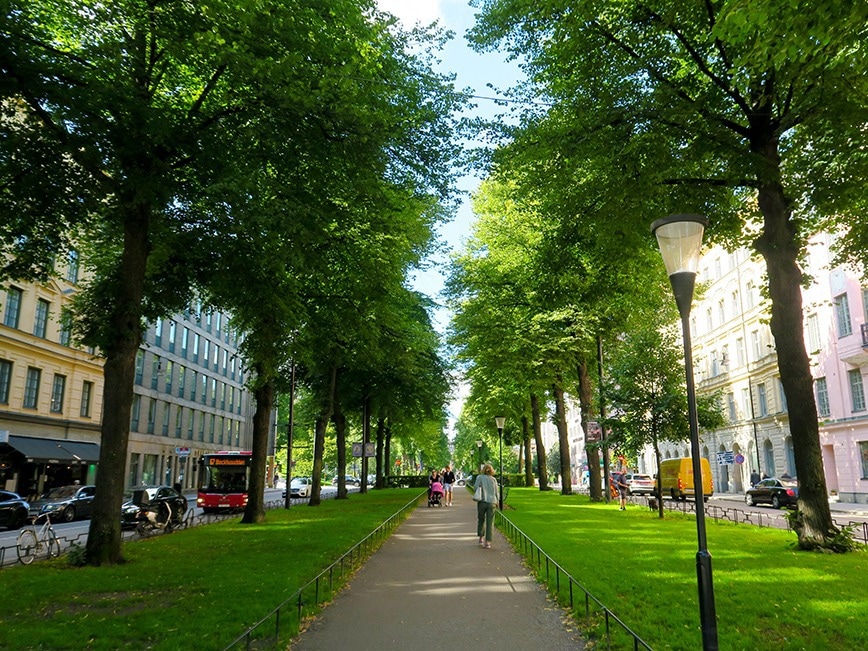According to recent research, dozens of European cities could achieve net zero carbon emissions in the next 10 years by implementing nature into their infrastructure.
 Creating more agreeable environments for walking and bicycling not only helps capture carbon, but a new study shows how it can help reduce emissions. Pictured, Karlavägen in Stockholm. Image Credit: David Callahan
Creating more agreeable environments for walking and bicycling not only helps capture carbon, but a new study shows how it can help reduce emissions. Pictured, Karlavägen in Stockholm. Image Credit: David Callahan
The study, which was recently published in the journal Nature Climate Change, demonstrates how cities can coordinate a wide range of green solutions such as parks, streetscaping, and roof gardens to not only capture but also help reduce carbon emissions.
Investigators from Sweden, the United States, and China collaborated on the study. The research suggested the most effective natural carbon sequestration approaches in 54 EU cities. It also demonstrated how combining these steps with other climate actions can help cities achieve net-zero carbon emissions while reducing emissions by 17.4% on average.
According to Zahra Kalantari, an Associate Professor of Water and Environmental Engineering at KTH Royal Institute of Technology, the investigators concentrated on the indirect ways that “nature-based solutions” can contribute to carbon neutrality.
Offset and Reduce Emissions
Nature-based solutions not only offset a proportion of a city’s emissions but can contribute to reduction in emissions and resource consumption too.
Zahra Kalantari, Associate Professor, Water and Environmental Engineering, KTH Royal Institute of Technology
The findings are based on integrating data from previous research on the effects of nature-based solutions. These include urban farming, narrower roads with more greenery and trees, permeable pavements that allow rainwater to soak into the ground, wildlife habitat preservation, and generating more pleasant walking and bicycling environments.
Urban parks, green space, and trees, for example, encourage more bicycling, walking, and other environmentally friendly habits that replace automobile driving. When combined with other solutions, such as green infrastructure, these initiatives can enhance urban microclimates by absorbing heat and cold, reducing energy use in buildings.
Guidance on Priorities and Location
It also advises on which initiatives should be prioritized and where they should be placed for maximum effect, she says. For instance, in Berlin, the research suggests prioritizing green buildings and urban green spaces, which could result in a 6% reduction in emissions for residences, a 13% reduction in industry, and a 14% reduction in transportation.
There are many studies that examine the effects of individual nature-based solutions, but this merges all of them and analyzes the potential systemic effect. That’s new.
Zahra Kalantari, Associate Professor, Water and Environmental Engineering, KTH Royal Institute of Technology
Researchers from KTH Royal Institute of Technology in Stockholm, MIT, Stockholm University, University of Gävle, Linköping University, Royal Swedish Academy of Sciences, and Shanghai Jiao Tong University collaborated on the study.
Journal Reference:
Pan, H., et al. (2023). Contribution of prioritized urban nature-based solutions allocation to carbon neutrality. Nature Climate Change. doi.org/10.1038/s41558-023-01737-x.